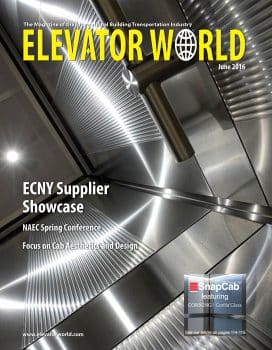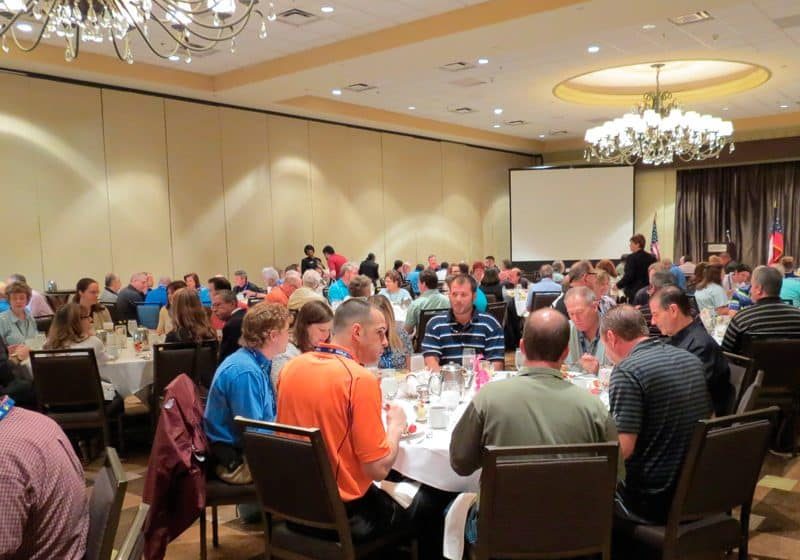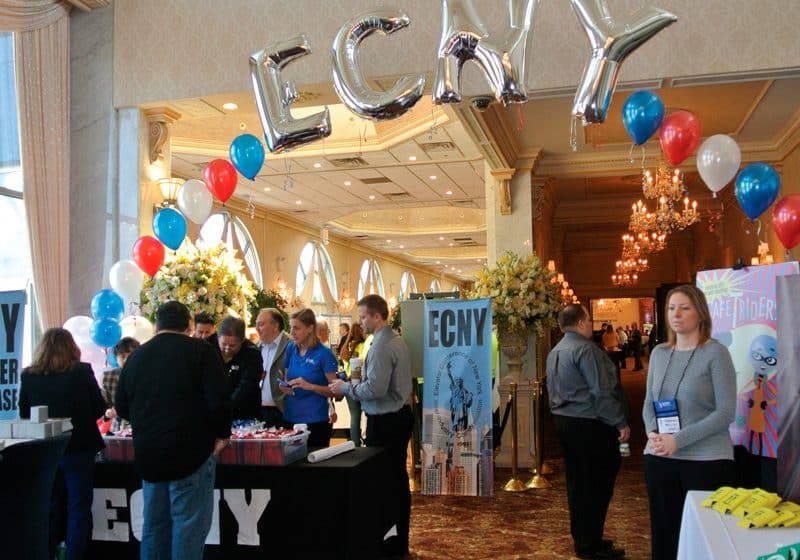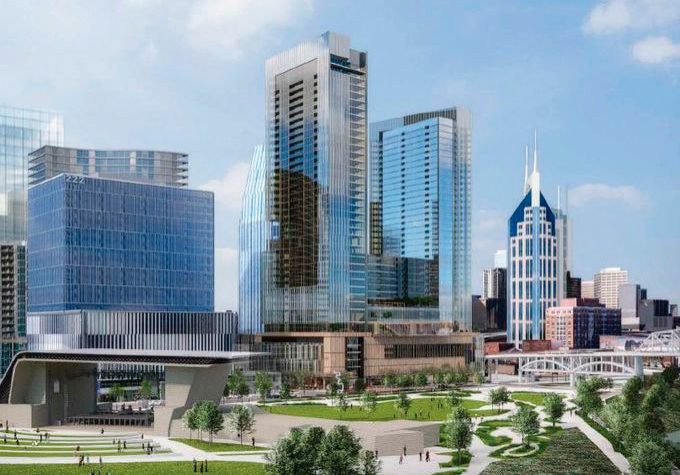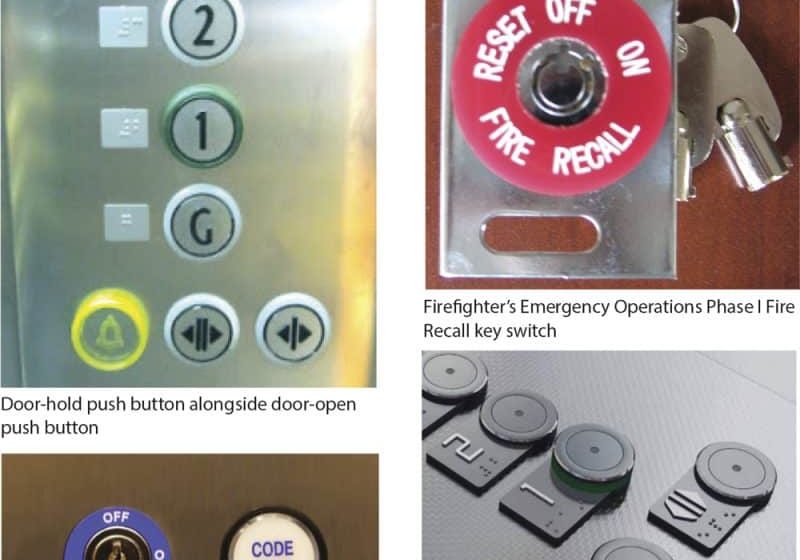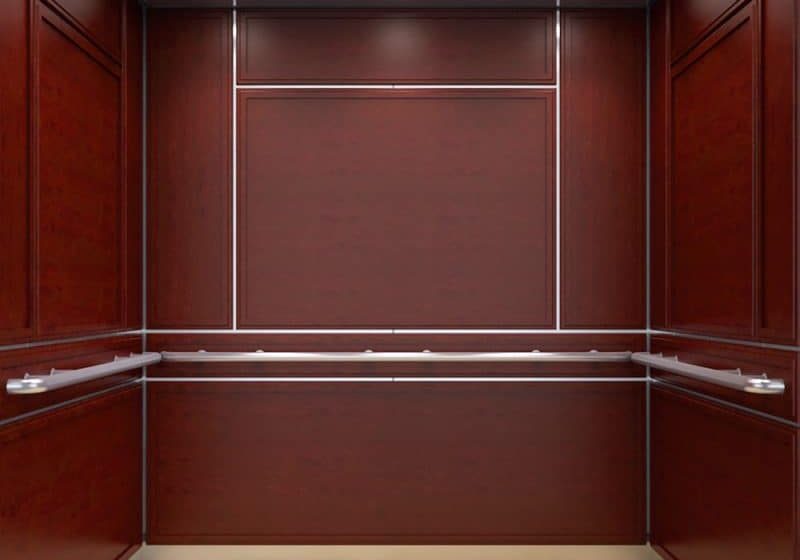Let There be Light!
Jun 1, 2016
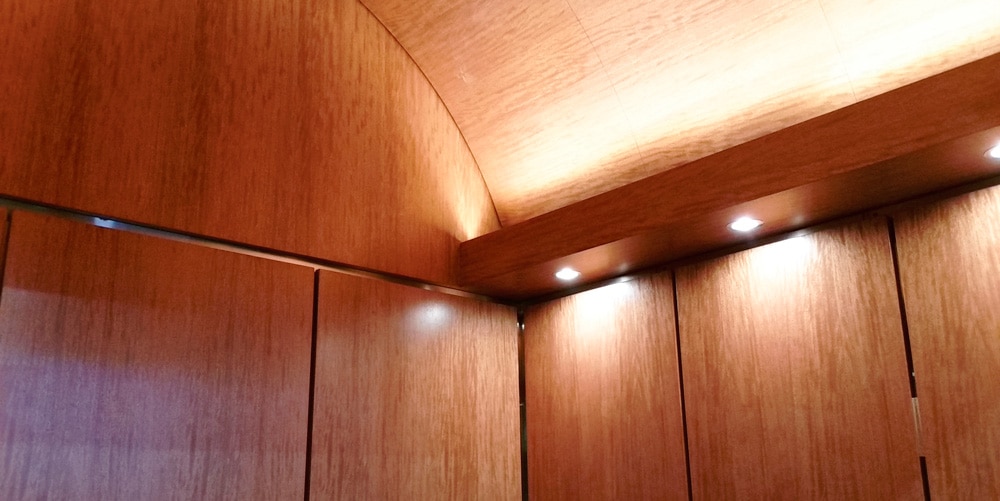
In this Reader’s Platform, your author discusses the impact of lighting on your elevator interior.
As any experienced salesperson will tell you, travel is just part of the job. As an account executive for an LED lighting manufacturer, you start to notice things that may go unseen by the untrained eye. Whether it’s an architect, artist, restaurant owner or retailer, they all use light to create a feeling or make their products more appealing to the consumer.
It’s not hard to see, but people are often just too busy to notice. We often make decisions based on the way things are lit without even knowing it. Since this is the business I’m in, I find it hard to walk through retail stores and restaurants without looking at their lighting applications and trying to identify what types of lights are being used and how.
I can say with complete confidence that everyone has been in an elevator at some point in their lives, if not regularly. Whether in an apartment building, the mall, or an office, elevators are everywhere and essential to everyday life.
It’s important to find a happy medium to make the rider feel welcome, while still meeting the minimum illumination requirements of the American Society of Mechanical Engineers.
Other than the exterior building and lobby, the elevator is usually your first impression of a building. You could have a dark elevator with dated finishes and recessed can lighting. Add some burned-out bulbs, flickering lights — maybe even a dank smell — and you have what horror movies are made of. This can send a poor message to the rider, leading them to take the stairs next time. On the flipside, you could have an elevator with high-end, reflective finishes and so much downlight that it feels like a tanning bed under the heat of those halogen bulbs.
Either way, it’s important to find a happy medium to make the rider feel welcome, while still meeting the minimum illumination requirements of the American Society of Mechanical Engineers. This is why designers are paying more attention to elevator interiors as part of an overall design, rather than an afterthought. This is most apparent in places like high-end office buildings, hotels and resorts where you often find custom architectural finishes such as murals, lit glass panels and textured cladding inside the elevator.
Throughout my travels, it has become apparent that perimeter lighting in elevators is a growing trend. It is being used to not only enhance these high-end finishes, but also improve the overall aesthetics of cab interiors. While many elevator cabs have already updated to LED lighting to reduce heat, energy and maintenance costs, LEDs are point sources that can produce glare and create unwanted reflection and striations in polished and brushed metal finishes. This is where even perimeter lighting comes in: it allows the designer to indirectly light the cab while hiding the source of light.
When designing the interior of a cab, the color temperature of the light also comes into play.
When designing the interior of a cab, the color temperature of the light also comes into play. Cabs with darker colors, such as wood-grain cladding, tend to use warmer color temperatures (3,000-3,500 K) to bring out the earth tones, whereas a cab with polished or brushed metal cladding would lean towards a neutral white (4,000 K). The use of perimeter lighting not only helps show off the cab interior, giving it a more modern feel, but it assists in reducing hotspots and glare in certain cab designs with low ceilings, as well as unwanted or unattractive reflections on brushed metal surfaces.
Any new trend presents a new set of challenges. Once you opt for smooth, even perimeter lighting, you must have a lighting system to accommodate the dimensions of the cab. There are a number of different cab sizes and configurations in the industry. I’ve seen as many as 13 for some manufacturers. This is coupled with the fact that the perimeter cove is often very shallow and does not allow much room to recess the light. This, in turn, can present additional issues (such as hotspots and unlit corners), so engineered optical systems can be used to provide even illumination without glare.
As cab designs continue to evolve, so must the lighting. The demand for a fixture that can be cost effectively made to accommodate cabs of all sizes — as well as provide the desired light output, smoothly and evenly, while not requiring a lot of depth — has never been greater. As lighting trends continue to change, a new list of challenges will follow, ensuring future travel filled with exciting observations for a lighting account executive.
Get more of Elevator World. Sign up for our free e-newsletter.

